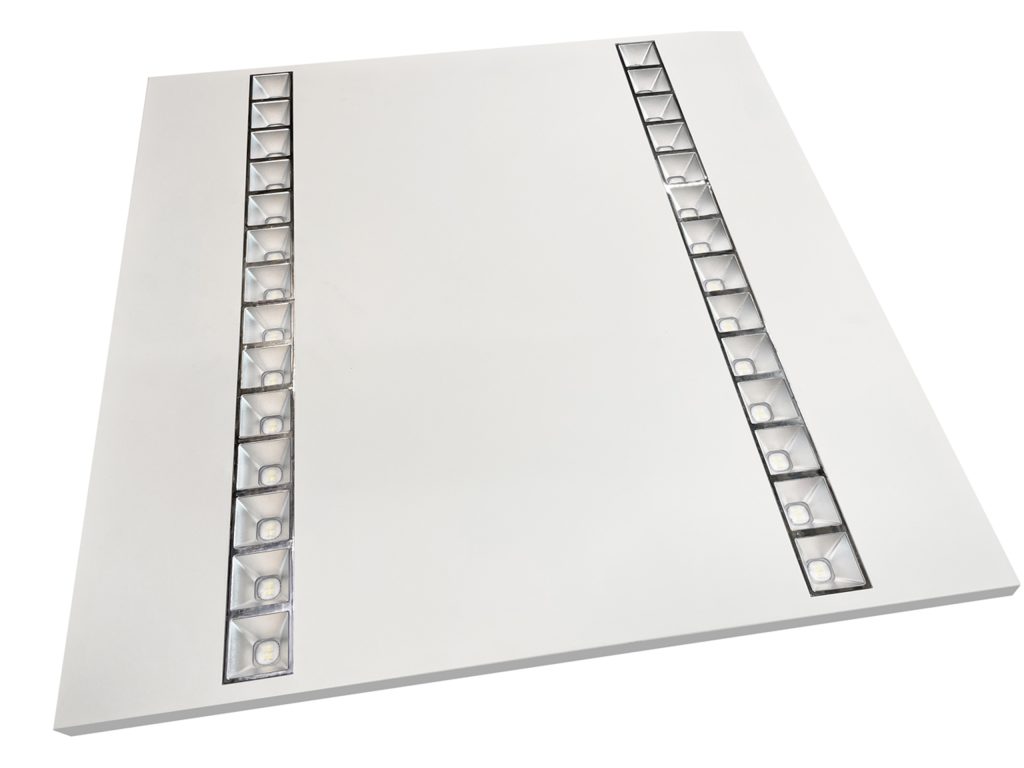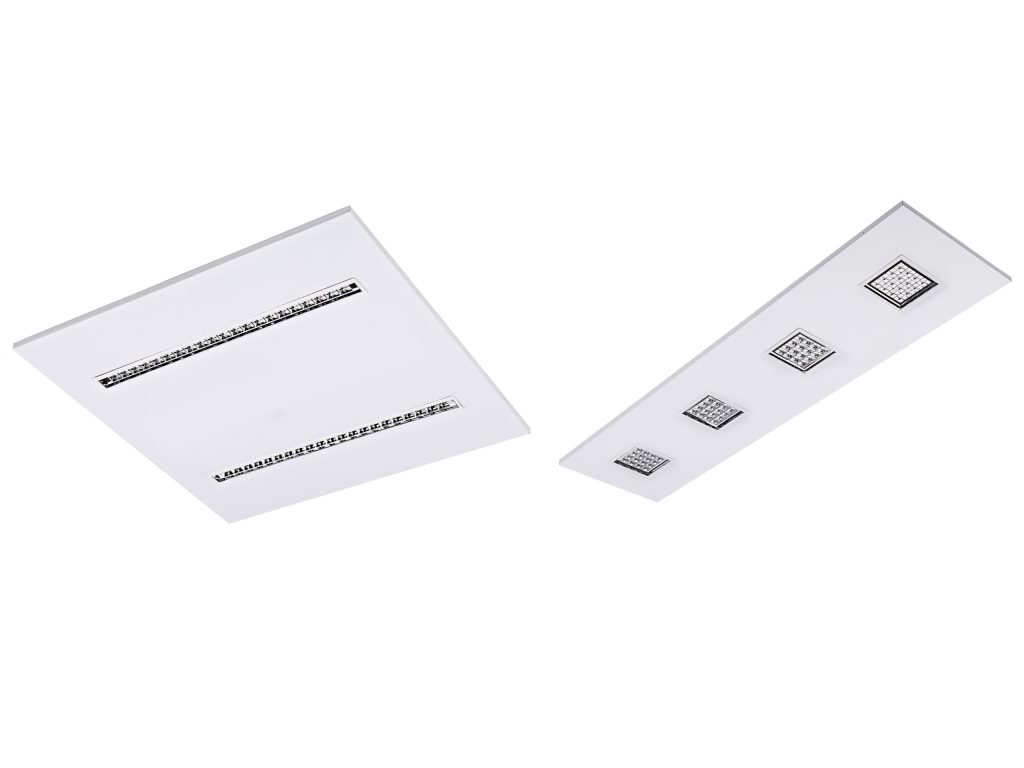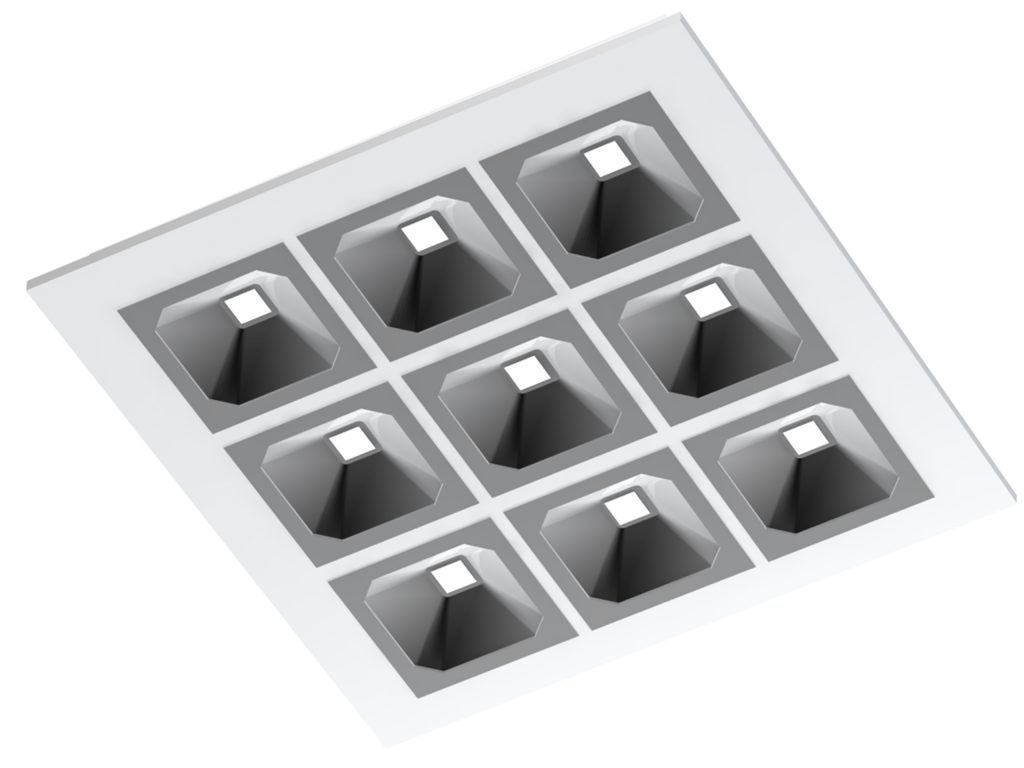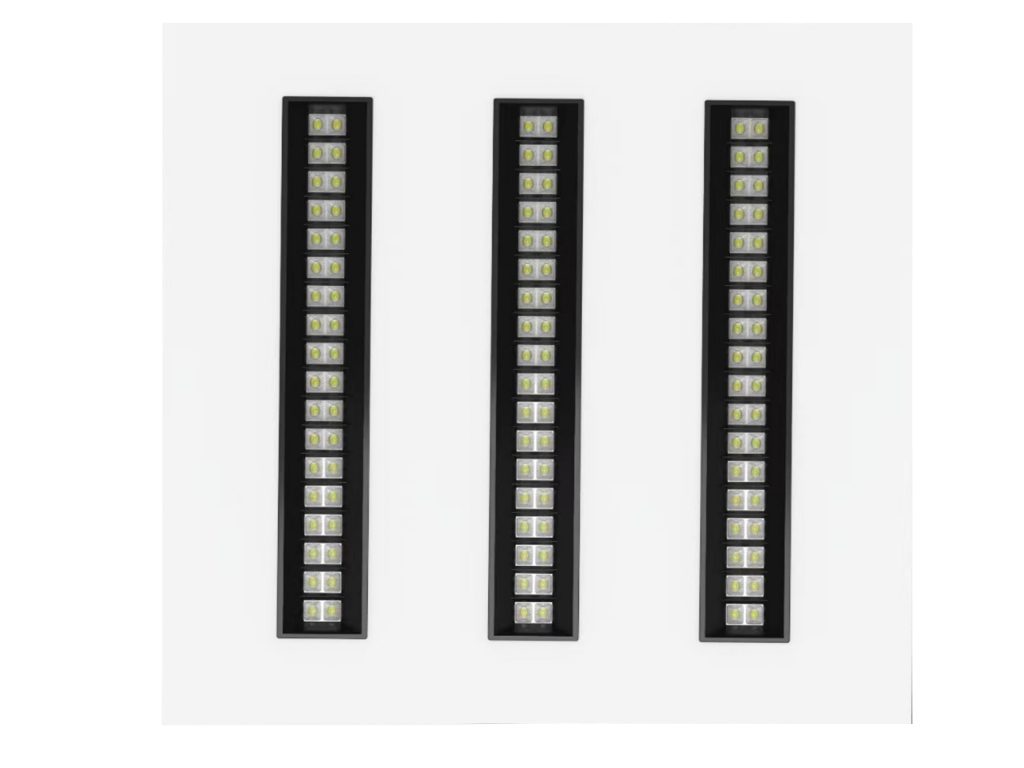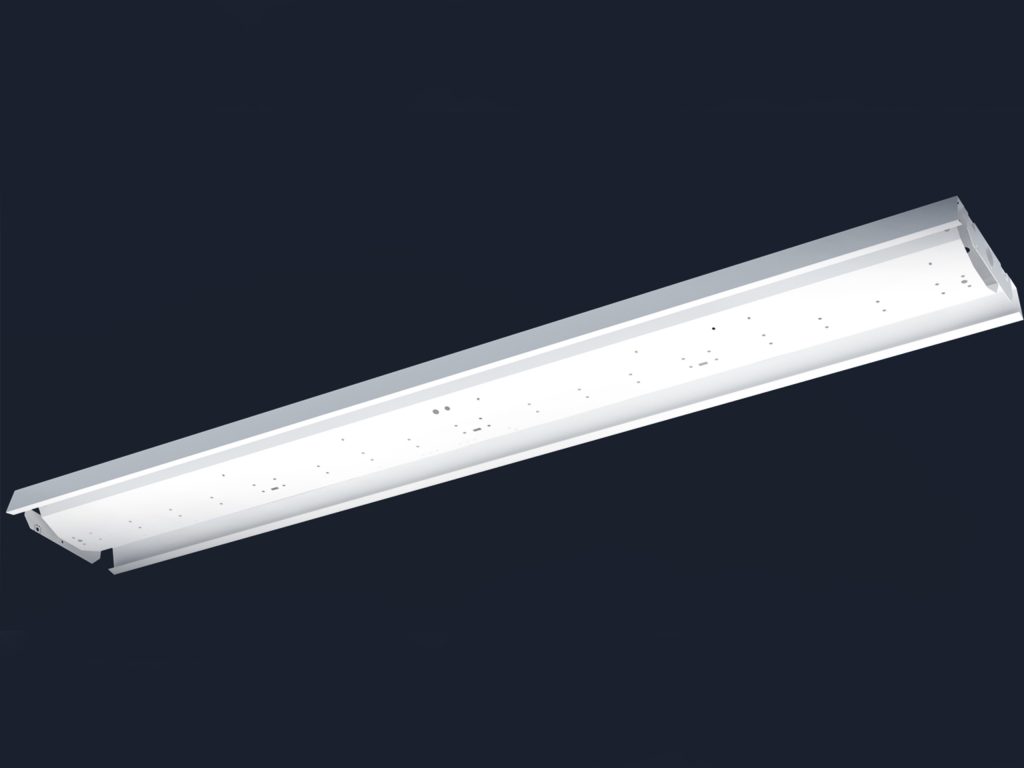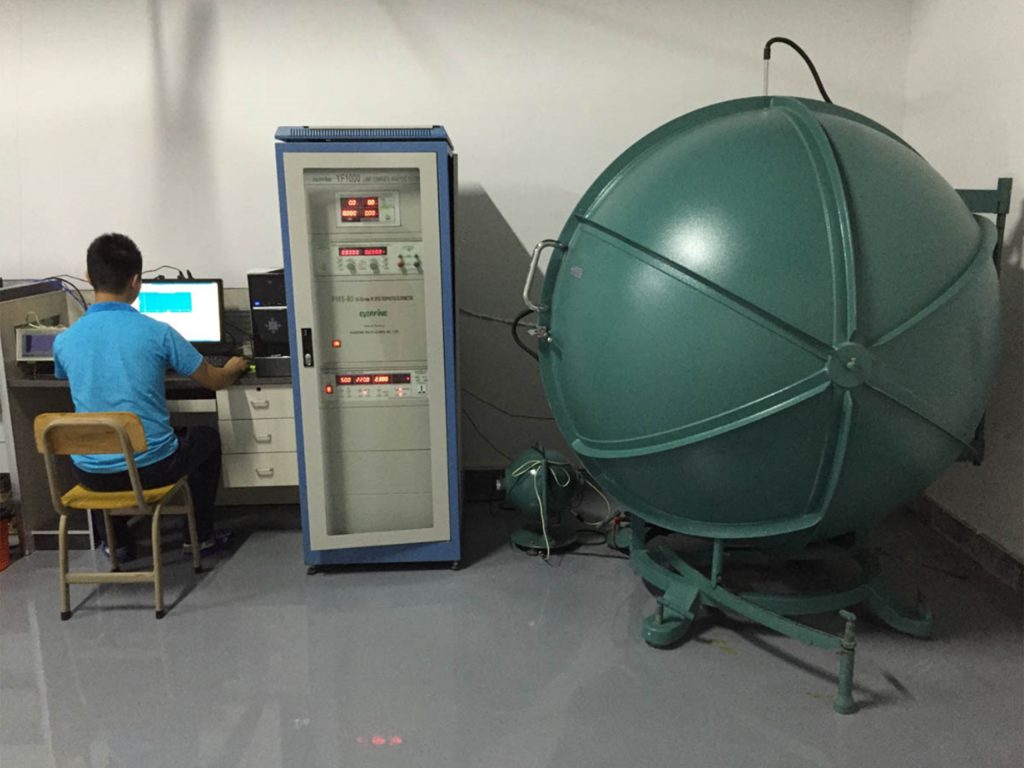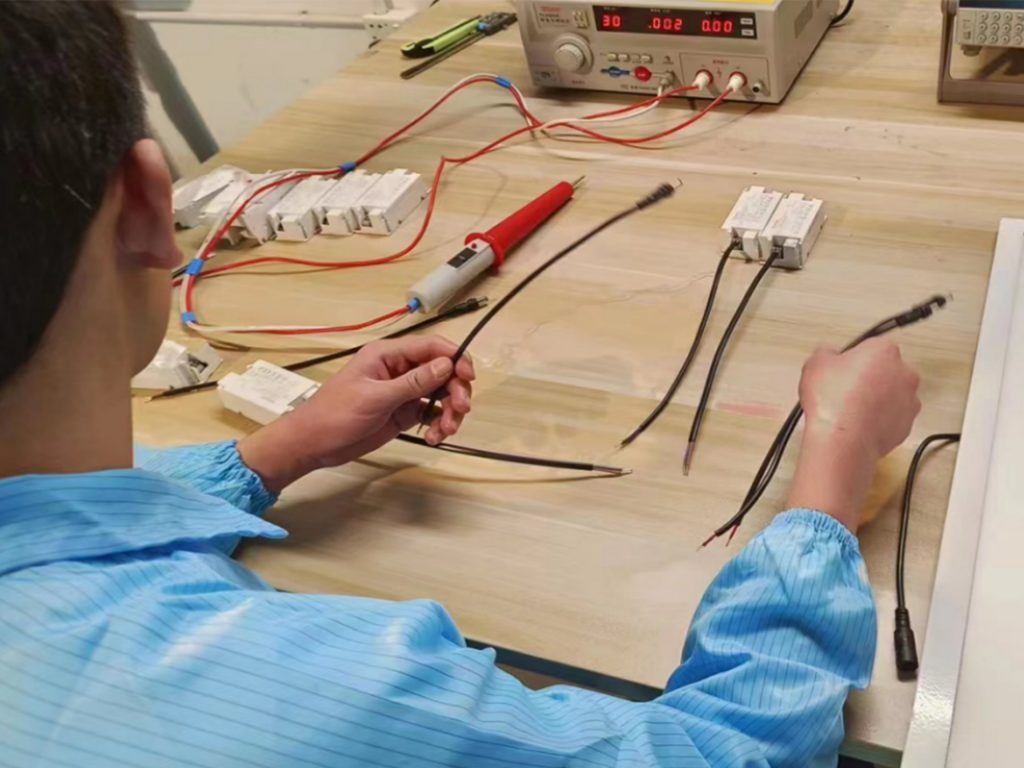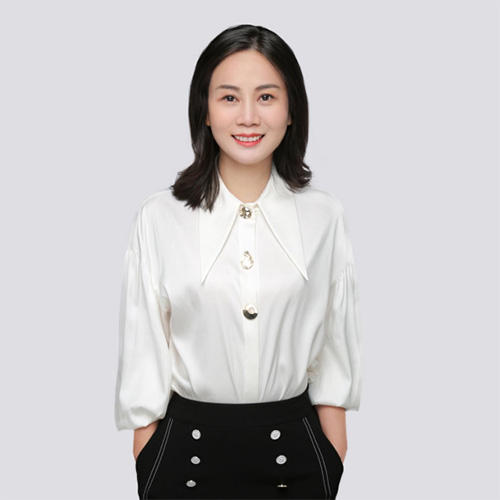LED Modular Luminaire
- Flexibility design
- Low glare(UGR<16)
- High color consistency, SDCM<3
- Easy to replace
- High light efficiency: >130LM/W
- More environmentally friendly & Energy saving
- Modules are replaceable
- Custom size requirements
- A variety of design appearance
- L90B10
Modular Luminaire Design & Supplier & Manufacturer
Unmatched Design & Manufacturing Capabilities
At OLAMLED, We have a wide range of modular lighting solutions, Each series is known for its unique design, versatility and manufacturing capabilities. Our diverse product portfolio demonstrates our ability to meet a wide range of aesthetic preferences and functional needs.We specialize in creating unique looks, from stylish and modern to classic and timeless, ensuring that our products can seamlessly blend into a wide range of architectural styles and interior design themes.
Our advantage lies not only in design, but also in strong mold manufacturing capabilities. This expertise allows us to translate innovative design ideas into tangible products with precision and speed. We understand that every space has its unique lighting needs, and our ability to quickly develop and deploy custom molds sets us apart in the industry. This flexibility allows us to offer personalized solutions to our customers.
Without compromising on safety or quality. This end-to-end approach, from initial design to final delivery, underscores our commitment to providing superior modular lighting solutions that combine aesthetic appeal, functionality, and sustainability.
What Are Modular luminaire?
Modular luminaires, as exemplified by OLAMLED’s innovative range, are designed for flexible and customized lighting solutions. These lighting systems consist of multiple parts or modules that can be assembled, rearranged, or expanded in various configurations to meet specific lighting needs. Here’s an overview of what makes modular lighting unique, drawing on OLAMLED’s approach:
Flexibility in Design: Modular luminaires are characterized by their adaptable design. This means they can be tailored to fit a variety of spaces and styles. Whether it’s adjusting the length, shape, or even the light direction, modular lighting can be customized to suit the specific requirements of any given environment.
Ease of Installation and Modification: One of the key benefits of modular lighting is the ease with which it can be installed and modified. These systems are designed to be user-friendly, allowing for quick assembly and adjustments. This feature is particularly valuable in dynamic environments where lighting needs may change over time.
Scalability: Modular luminaires can be scaled up or down, making them ideal for a range of applications, from small residential spaces to large commercial projects. This scalability ensures that the lighting system can grow and evolve in tandem with the space it illuminates.
Variety of Functions: Modular lighting systems from OLAMLED often come with a range of functionalities, including different dimming options, color temperature controls, and even smart technology integration. This versatility makes them suitable for a wide array of lighting applications.
Aesthetic Diversity: Modular luminaires offer a diverse range of aesthetic options. With various finishes, colors, and designs available, these lighting systems can act as both functional fixtures and design elements within a space.

Why Choose Modular luminaire?
Choosing modular luminaires offers several significant advantages, making them a popular choice for a wide range of lighting applications. Here’s why they are often preferred:
Customization:Modular luminaires provide unparalleled flexibility in design and functionality. You can tailor them to fit specific size, shape, light output, and aesthetic requirements of any space. This level of customization is particularly beneficial for unique architectural spaces or specific design themes.
Scalability: One of the key benefits of modular lighting is its scalability. It allows you to start with a basic setup and expand or modify it as your needs change. This adaptability is ideal for growing businesses, evolving residential spaces, or any environment where future modifications might be needed.
Ease of Installation and Upgrades: Modular systems are designed for easy installation and can often be updated or reconfigured without the need for complete replacement. This ease of installation and upgradeability saves time and reduces costs over the long term.
Energy Efficiency: Many modular lighting systems, particularly those like OLAMLED’s, incorporate energy-efficient technologies such as LED. This not only reduces energy consumption and costs but also aligns with environmentally friendly practices.
Flexibility of design: Flexibility of design in lighting, especially in the context of modular luminaires like those from OLAMLED, represents the ability to tailor lighting solutions to specific needs and spaces. This includes customizing shapes, sizes, and functionalities to fit various architectural styles and purposes.
Easy to repair and maintain: The modular nature of these lights makes maintenance and repair more straightforward. If a component fails, it can often be replaced individually without needing to replace the entire fixture, making maintenance both easier and more cost-effective.
Versatility in Application: Modular luminaires are versatile enough to suit a wide range of applications, from commercial and retail spaces to residential and public areas. Their ability to adapt to different environments makes them a practical choice for diverse lighting needs.
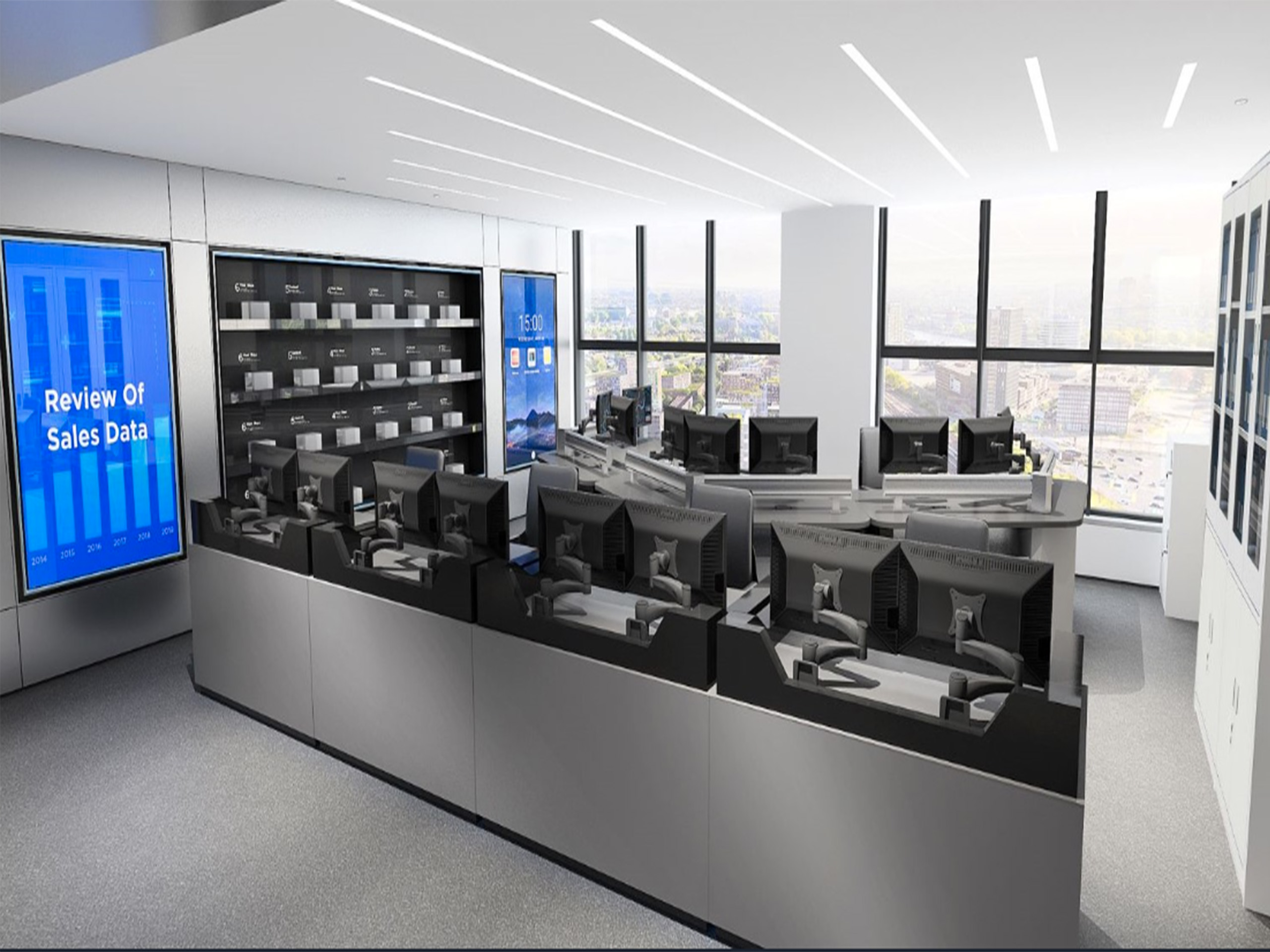
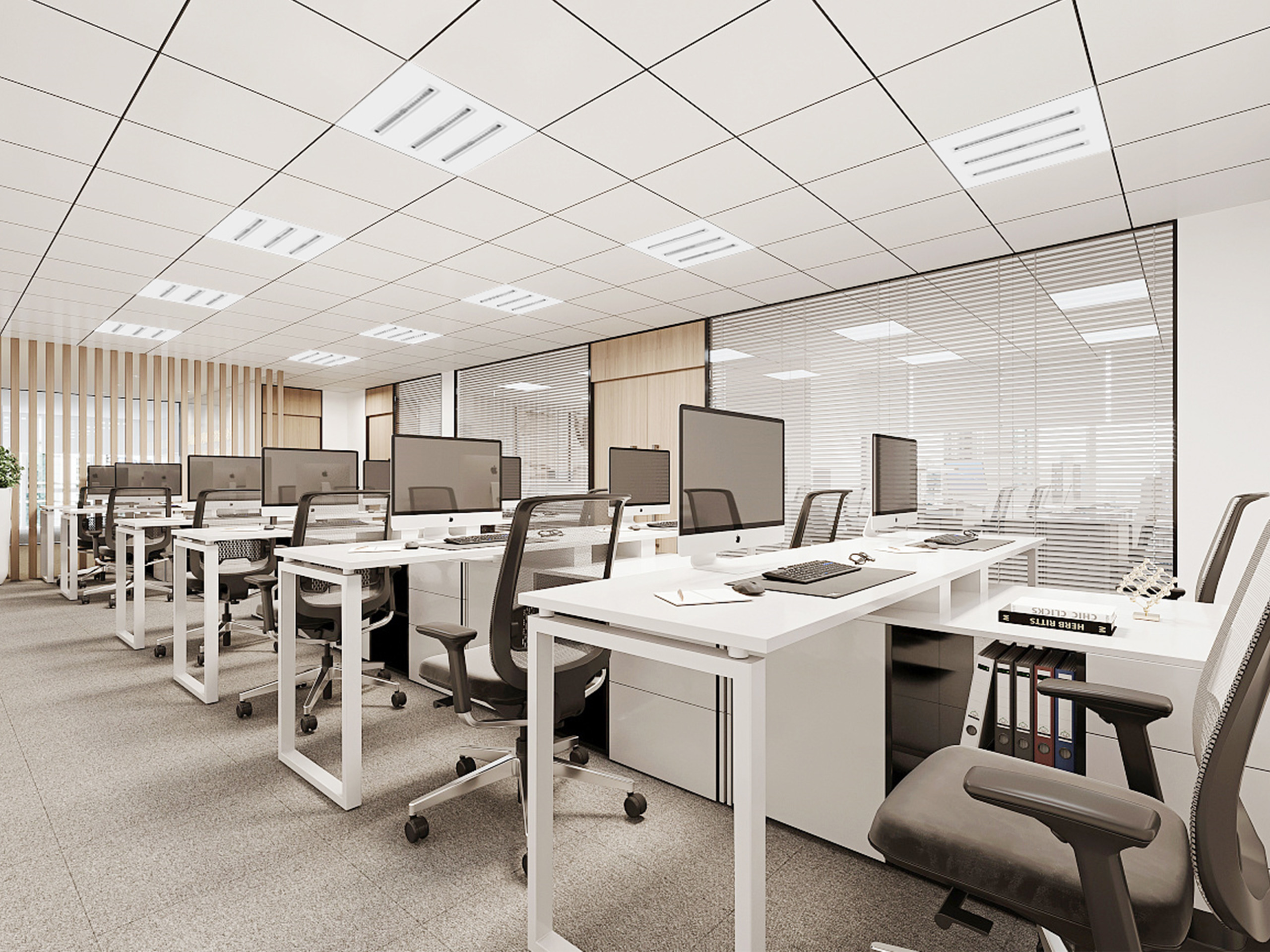
Modular luminaire Application
Modular luminaires offer a wide range of applications due to their versatility and adaptability. Here are some key areas where they can be effectively utilized:
Offices: In office environments, modular lighting can enhance productivity and comfort. They provide bright, focused light for workstations and can be adjusted for conference rooms and common areas, accommodating different lighting needs throughout the day.
Stores: Retail spaces benefit from modular luminaires through dynamic and flexible lighting that can accentuate products, create inviting atmospheres for customers, and adapt to different display setups.
Schools: In educational settings like schools, these lights offer bright and uniform illumination conducive to learning. They can be adjusted for classrooms, laboratories, and recreational areas, ensuring optimal lighting for various educational activities.
Hospitals: In healthcare facilities, modular luminaires provide essential lighting that contributes to a healing environment. They offer calm, uniform lighting in patient rooms and can be adapted for more intensive lighting needs in treatment areas and operating rooms.
Business Centers: For business centers, which often host a variety of businesses and events, modular lighting is ideal due to its adaptability. It can cater to different office layouts, meeting rooms, and communal spaces, enhancing both functionality and aesthetics.
Libraries: In libraries, modular luminaires can provide ambient lighting for a comfortable reading environment, while also offering focused light for study areas and archives. Their adaptability is beneficial in accommodating the diverse lighting needs of a library’s many sections.
What Series of Modular luminaire Do We have?
- Replacable module with socket
- Easily replaceable modules
- Wide Angle Module Luminaire
- High lighting efficiency type
- Modular Office Light-PA series
- An Innovation Eye Protection Modular Panel Light
- UGR<16 Reflector with lens solution
- Luminous efficiency: up to 140lm/W (80Ra)
- Color rendering index: >80Ra, >90Ra(>130lm/W) optional
- Secondary optical design for protect eyes
- High luminous efficiency for Energy saving
- Led modules easy replace for environmental protection
- Modules are recyclable
- Optional: Adjust Color temperature
- Power: 30W, 45W ,60W
- Size: 600x600mm, 300x1200mm, 300x1500mm, 600x1200mm
- Color: Black, White
- CRI: >90Ra, >80Ra
- Up to 130lm/W
- Modules can be replaced without the need for a professional electrician
Secondary optical design for protect eyes
- High luminous efficiency for Energy saving
- Led modules easy replace for environmental protection
- Modules are recyclable
- Optional: Adjust Color temperature
- Power: 30W, 45W ,60W
- Size: 600x600mm, 300x1200mm, 300x1500mm, 600x1200mm
- Color: Black, White
- CRI: >90Ra, >80Ra
- Up to 130lm/W
- Modules can be replaced without the need for a professional electrician
The European Union’s Eco-design Directive, known as the ErP (Energy-related Products) Directive, sets various requirements for the energy efficiency and environmental performance of energy-related products, including lighting fixtures
130lm/W, 150lm/W, >180lm/W
In addition to setting minimum efficacy levels, the directive may also include performance standards related to color rendering, longevity, and start-up time to ensure that energy-efficient lighting products also provide high-quality light.
Why Modular Panel Luminaire are a Perfect Fixture ?
Modular panel lights are a popular and effective lighting solution for several reasons:
Customization and Flexibility: Modular panel lights offer significant customization options. You can choose from different sizes, shapes, and functionalities to suit specific needs and preferences. This adaptability makes them suitable for a wide range of spaces and design aesthetics.
Easy Installation and Upgradability: Their modular nature makes these lights easy to install and upgrade. If lighting needs change over time, you can easily reconfigure or expand the system without replacing the entire setup, offering convenience and cost-effectiveness.
Uniform and Efficient Illumination: Modular panel lights are known for providing even and consistent lighting. They typically use LED technology, which is highly energy-efficient, reducing electricity costs and environmental impact.
Sleek and Contemporary Design: These lights often feature a modern and minimalistic design, making them an aesthetically pleasing addition to any space. They can enhance the overall look of a room or area while providing necessary illumination.
Durability and Longevity: Made with high-quality materials, modular panel lights are durable and have a long lifespan, especially when LED technology is used. This longevity ensures that they are a cost-effective lighting solution over time.
Versatility in Application: Modular panel lights can be used in a variety of settings, including offices, schools, hospitals, retail spaces, and homes. Their versatility makes them a practical choice for diverse lighting needs.
What is the Difference Between Modular Panel Luminaires and ordinary Panel Lights?
Design Flexibility and Customization:
- Modular Panel Luminaires: They offer high design flexibility. You can customize various components like size, shape, light output, and even add or remove modules to fit specific requirements. This adaptability is ideal for diverse architectural and interior design needs.
- Ordinary Panel Lights: These are usually available in standard sizes and shapes with limited customization options. They are designed for general use and may not cater to specific aesthetic or functional requirements.
Installation and Configuration:
- Modular Panel Luminaires: Easier to install and reconfigure due to their modular design. If the lighting needs of a space change, these lights can be easily adjusted, expanded, or reconfigured without replacing the entire system.
- Ordinary Panel Lights: Typically have a more static installation. Changing or upgrading these lights often requires replacing the whole unit, which can be less convenient and more costly.
Aesthetics and Integration:
- Modular Panel Luminaires: Often have a more contemporary and sleek design, and can be integrated into the décor more seamlessly. They can also include advanced features like smart controls and dimming capabilities.
- Ordinary Panel Lights: Generally have a basic, functional design and may lack advanced features. Their aesthetic integration into a space is more limited compared to modular options.
Energy Efficiency and Technology:
- Both types of lights can be energy-efficient, especially if they use LED technology. However, modular panel luminaires often incorporate more advanced technologies and controls for energy savings and performance optimization.
Cost and Value:
- Modular Panel Luminaires: Initially, they may be more expensive due to their advanced features and customization options. However, they can offer greater value over time due to their adaptability, durability, and potential energy savings.
- Ordinary Panel Lights: Generally more affordable upfront but may have higher long-term costs due to less flexibility and potential need for complete replacement for upgrades or changes.
How to Choose a Good Design of the Module Luminaire?
Choosing a good design for modular lighting involves considering several key factors to ensure that the lighting not only meets your specific needs but also enhances the space aesthetically and functionally. Here are some guidelines:
Understand Your Space Requirements:
- Size and Layout: Consider the size and layout of the space where the lighting will be installed. Ensure the modular light design can be adapted or customized to fit the area appropriately.
- Purpose of Lighting: Determine the primary function of the lighting in the space – whether it’s for general illumination, task lighting, accent lighting, or a combination.
Assess Design Flexibility:
Look for modular lighting systems that offer flexibility in terms of shape, size, and configuration. This allows for customization according to the specific requirements of your space.
Consider Aesthetics and Style:
Choose a design that complements the interior design and architecture of the space. Consider the style, color, and finish of the lighting fixtures.
Think about how the lighting will integrate with the existing decor and whether it will be a focal point or blend into the background.
Check for Quality and Durability:
Opt for high-quality materials and construction to ensure durability and longevity.
Consider the brand reputation and read reviews or seek recommendations.
Evaluate Lighting Performance:
Look at the luminous efficacy (lumens per watt) to gauge energy efficiency.
Consider the color rendering index (CRI) for accurate color representation in the illuminated space.
Ensure that the light output (lumens) is sufficient for the intended use.
Energy Efficiency and Sustainability:
Prefer lighting options that are energy-efficient, such as LED modules.
Check for any energy-saving features like dimming capabilities or smart controls.
Ease of Installation and Maintenance: Consider how easy it is to install, reconfigure, and maintain the lighting system. Modular designs should ideally offer simple installation and ease of maintenance.
Budget and Cost-Effectiveness:
Balance the cost against the features and benefits. While budget is a consideration, investing in a quality product can be more cost-effective in the long run.
Compatibility with Smart Lighting Systems (if applicable):
If you’re interested in smart lighting solutions, check the compatibility of the modular lights with smart home systems or IoT devices.
Custom Your Module Luminaire
Shell:
- Basics: Refers to the external housing or enclosure of the LED light fixture.
- Customization: Size choices (the Size according to customer requirements), color options, design styles (modern, industrial), and finishes (matte, glossy, textured).
LED Source Brand:
- Basics: The manufacturer or brand of the LED chip or module used in the fixture.
- Customization: Choice of reputable brands for quality and performance, such as Philips, Cree, or Osram, depending on availability and performance requirements.
CCT (Correlated Color Temperature) & Color:
- Basics: CCT measures the color appearance of the light emitted, measured in Kelvin (K). from 2700-6500K.
- Customization: Options ranging from warm white (lower Kelvin) to cool white (higher Kelvin), and the possibility of colored LEDs for special applications.
CRI (Color Rendering Index):
- Basics: A measure of how accurately the light source renders colors compared to natural light, on a scale of 0-100.Commonly used are >80Ra and >90Ra
- Customization: Higher CRI values (close to 100) for applications where color accuracy is crucial, like in retail or art galleries. Commercial lighting usually over for 90Ra
LED Driver:
- Basics: Regular power function: On/off
- Customization: Options for dimmable drivers, drivers with different voltage inputs, or those compatible with smart control systems. the most used for commercial lighting is DALI dimming
Dimension:
- Basics: The size and structure of the LED fixture.
- Customization: Custom size to fit specific mounting space or design requirements.
Power:
- Basics: The wattage of the LED fixture, affecting its light output and energy consumption.
- Customization: Choosing the appropriate wattage based on the desired brightness and energy efficiency.
Wires & Plug:
- Basics: Electrical connectivity components.Specifications of wires and requirements for plugs in different countries
- Customization: Length and type of wiring, plug types for different regions, and options for hardwiring or plug-in installations.
Label:
- Basics: Informational stickers or plates on the fixture. Generally includes LOGO, model, parameter, certification mark and so on
- Customization: Labels for branding, technical information (like wattage, voltage), or compliance markings (CE, ROSH, UKCA etc.) and with some special style design
Packaging:
- Basics: The external packaging used for shipping and selling the product.
- Customization: Eco-friendly materials, branded designs, size and shape for efficient shipping, protective packaging for safe transit.
Why Customize Modular Luminaire From Us?
That our organizational capabilities, design expertise, production proficiency and delivery efficiency can add more possibilities to our customers’ projects
Deep Customization & High Flexibility
We offer extensive customization options, tailoring our products to meet your specific needs. Our flexibility in design and production allows us to adapt to a wide range of requirements, ensuring that your unique requirments is realized.
Superfast Response
Our team is committed to providing quick and efficient responses to all inquiries and requests. We prioritize swift communication and prompt decision-making to keep your projects moving without delays.
Less MOQ
We understand the diverse needs of our clients and offer low minimum order quantities. This approach makes our high-quality products accessible to projects of all sizes, ensuring that even smaller or niche requirements are met with ease.
50% Faster delivery time
We pride ourselves on our ability to deliver products 50% faster than the industry standard. Our efficient production processes and streamlined logistics ensure that you receive your orders promptly, keeping your project on schedule.
Strong supply chain system
Our robust supply chain system ensures the consistent availability of materials and components, minimizing delays and disruptions. This strength in supply chain management contributes to our overall reliability and the timely execution of orders.
15-year engineering design team
Our experienced engineering design team, with over for 15 years of expertise, brings a wealth of knowledge and innovation to each project. Their skills in design and engineering ensure high-quality, technically sound, and aesthetically pleasing solutions.
Our Advantages
How to Ensure the Quality of LED Modular Luminaire for Your Project
Controlling the quality of LED modular light fixtures involves a comprehensive process, from material inspection to manufacturing process checks, and finally to finished product inspection. Here’s a detailed look at each step:
Material Inspection:
- Incoming Quality Control (IQC): This involves checking the quality of all raw materials and components before they enter the production line. Materials like LED chips, drivers, housing materials, and electrical components are inspected for quality and specifications.
- Supplier Assessment: Regularly evaluating suppliers to ensure they meet quality standards and maintain consistency in the materials supplied.
Manufacturing Process Inspection:
- Process Quality Control (PQC): Monitoring and controlling the manufacturing process to ensure that each step meets quality standards. This includes checks during the assembly of LED modules, soldering, wiring, and fixture assembly.
- In-line Testing: Conducting tests at various stages of production such as thermal testing, electrical testing, and light output measurement to ensure that the product is being built to specifications.
Finished Product Inspection:
- Final Quality Control (FQC): Once the product is assembled, a comprehensive inspection is performed. This includes visual inspections, functional testing (like on/off cycling, dimming functionality), and performance testing (lumen output, color accuracy).
- Life Testing: Subjecting finished products to extended use to identify potential long-term issues like LED lifespan, driver stability, and color stability.
Certification and Compliance Testing:
- Ensuring that products meet relevant industry standards and certifications like CE, UL, or RoHS. This involves testing for safety, electromagnetic compatibility, and environmental impact.
Consistency Checks:
- Implementing checks to ensure batch-to-batch consistency in color temperature, brightness, and overall performance. This is crucial for modular systems where uniformity is key.
Packaging Inspection:
- Final check to ensure that the packaging is secure and suitable for transit, and that it includes the correct labeling and instructions.
Feedback and Continuous Improvement:
- Using customer feedback and post-sale data to continuously improve product quality. This involves regularly updating manufacturing processes and quality control measures.
FAQ
What other types of lighting fixtures can be chosen for offices besides panel lights?
Answer: In addition to modular panel lights, LED linear lights are an excellent choice for office lighting. These lights offer a sleek and modern design, providing uniform illumination that’s ideal for office environments. LED linear lights can be used for general ambient lighting, task lighting over workstations, or as accent lighting to enhance the office’s aesthetics.
What are LED Linear Lights and where are they primarily used?
Answer: LED linear lights are lighting fixtures characterized by their elongated, linear shape. They provide a continuous and uniform light source, which makes them ideal for a variety of settings. Primarily, LED linear lights are used in commercial and office spaces for ambient lighting, in retail settings for accentuating products, and in residential areas for both functional and decorative purposes. Their sleek design makes them a popular choice for modern and minimalist spaces.
What are LED Panel Lights and where are they typically used?
Answer: LED panel lights are flat, rectangular or square lighting fixtures known for their even and efficient light distribution. They are commonly used in commercial settings like offices, schools, hospitals, and retail stores due to their bright, glare-free light that’s gentle on the eyes. They are also popular in residential spaces, particularly in kitchens, living rooms, and home offices, where good ambient lighting is needed. LED panel lights are valued for their energy efficiency, long lifespan, and their ability to provide a clean, modern look to any space.
Key Aspects and Knowledge Points About the LED Industry
Technology and Innovation: LED technology has advanced significantly since its inception. Modern LEDs are highly energy-efficient, have long lifespans, and come in a variety of color temperatures and brightness levels. Innovations continue in areas like OLEDs (Organic LEDs) and quantum dots, which promise even greater efficiency and new applications.
Energy Efficiency and Environmental Impact: LEDs are known for their energy efficiency, consuming significantly less power than traditional incandescent and fluorescent lights. This reduces electricity costs and carbon footprints. They also have a longer lifespan, which means less waste generated from burnt-out bulbs.
Versatility and Applications: LEDs are incredibly versatile and used in a wide range of applications, from general lighting in homes and offices to specialized uses in automotive lighting, horticulture, medical devices, and more. Their small size and durability make them ideal for various applications.
Smart and Connected Lighting: With the rise of smart home technology, LED lighting has integrated with IoT (Internet of Things) to offer features like remote control, light color and intensity adjustments, and integration with home automation systems.
Health and Safety Considerations: LEDs have raised questions about blue light exposure and its potential impact on health. However, many LEDs are now designed to minimize harmful blue light and flicker, making them safer for long-term use.
Market Trends and Economics: The LED market has seen rapid growth and is expected to continue expanding. This growth is driven by the declining cost of LED technology, increasing awareness of energy efficiency, and global initiatives to phase out less efficient lighting technologies.
Regulatory Landscape: Governments worldwide are imposing stricter regulations on lighting efficiency and environmental impact, further driving the adoption of LED technology. Compliance with these regulations is essential for manufacturers and suppliers in the LED industry.
Customization and Design Trends: LED technology allows for significant customization in lighting design, leading to innovative and aesthetically pleasing lighting solutions. This includes dynamic lighting systems, architectural lighting, and human-centric lighting designs that adapt to the needs of users.




